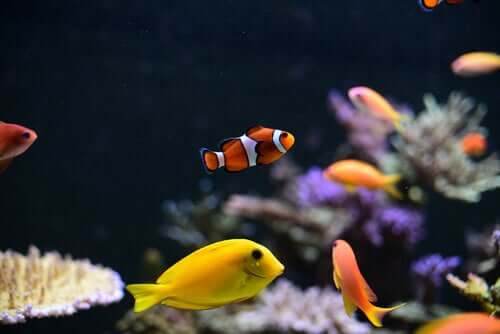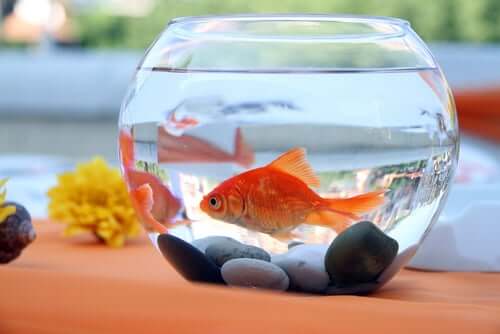Fish Tank Maintenance in the Winter Season


Written and verified by the lawyer Francisco María García
Fish tank maintenance in winter is key for maintaining the good health of your animals as colder temperatures approach. So, here are three tips to ensure the correct balance of your aquarium.
Knowing fish body temperature better
Most mammals, including humans, are endothermic. What this means is that they’re able to generate heat and warm up their body tissues through their own metabolism. Thus, we classify them as “warm-blooded animals.”
Most fish are ectotherms, just like reptiles and amphibians. So, their bodies can’t produce heat. Actually, it’s the external conditions that determine the temperature of their body. It’s for this reason that they’re able to sustain huge environmental differences that include temperature changes. These “cold-blooded animals” use external sources to either heat up or cool down.

Marine conditions
Sea fish usually regulate their body temperature through their behavior. This is different from the way mammals do it — through physiological methods.
The deepest bodies of ocean water are way colder, while the most superficial heat up with the sun. A fish with greater thermoregulation capacity remains in a layer of deep water, without migrating during winter. Also, less thermoregulatory fish usually look for the hottest part of the water where their body can adapt.
Three tips for fish tank maintenance in winter
1. Adequate temperature
Having a fish in an aquarium requires you to recreate the temperature of their natural habitat in order to enable their development. About 70% of fish species are native to temperate climate waters, according to experts.
Thus, if you have a fish tank in winter in cold towns then you must have an efficient heating system.
It’s also important to have a thermostat or measurement system around as it’ll allow you to regulate and control the internal temperature of the fish tank. Fish will be in trouble if you overheat the water.
Thus, when it comes to heating, we must reaffirm the importance of properly ventilating the environment. You must leave a window partly open throughout the day to avoid accidents by poisoning.
Many experts think it a good idea to turn off the water circulation pump of the fish tank during the winter. Mainly when dealing with considerably different types of fish living in large ponds.
2. Choose the ideal location for your fish tank
Getting a wide fish tank is only the first step to take care of your fish. Choosing the ideal location is also essential to condition the environment where your marine friends will grow and develop.
Never leave an aquarium outdoors. The bursts of cold and hot air are very dangerous for the health of the fish. So, a ventilated environment with a good incidence of sunlight is preferable.
Also, according to Feng Shui, you should place fish tanks on the right side of the windows. Preferably, in the northern areas of your home or work environment. This arrangement is the best one for providing good energy to your environment.
3. Balanced winter feeding
Most species adopt natural changes in their eating habits during winter and fish are no exception.
When there’s adequate heating, you must feed the fish 2 to 4 times a day – provided the temperature is higher than 54ºF.
But when letting the fish go into hibernation, you should only feed them once a day. This practice respects the required food changes but requires a lot of care. They also require permanent control of the temperature of the fish tank throughout winter.

Is your fish tank well balanced?
The best way to find out if the water of your fish tank is well balanced is to observe the way these animals behave. They’re very sensitive and immediately show symptoms of inappropriate conditions.
When there’s a balance in the temperature inside an aquarium the fish tend not to show major changes. They’ll continue their feeding and swimming routine, so characteristic in the summer.
But if the water in the tank is too cold, the fish will trigger their survival skills. Mainly, they’ll remain motionless at the bottom of the fish tank and won’t swim around.
You can tell by the same behavior that they may not be getting enough food during winter.
You must double your fish care when the colder temperatures arrive. This is because properly maintaining their tank is the best way to protect them.
This text is provided for informational purposes only and does not replace consultation with a professional. If in doubt, consult your specialist.